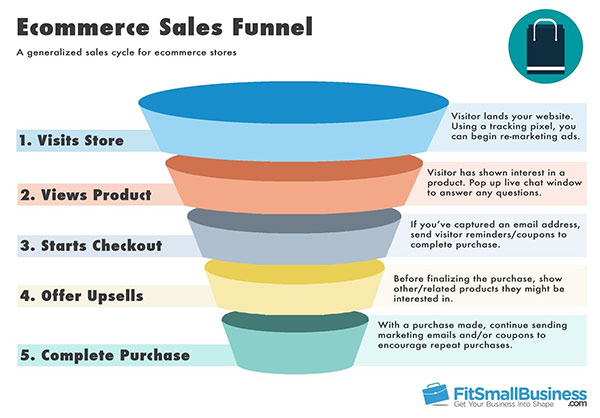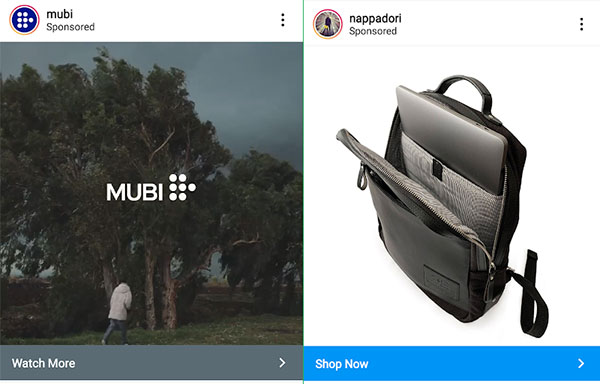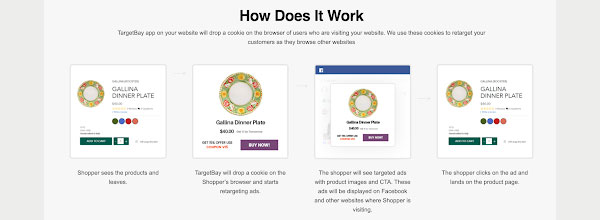A person encounters between 6000 to 10000 ads every day on average. It’s obvious for consumers to like products they see in ads. Some feel interested actively and follow products/brands to make immediate purchases, while others think of purchasing a product at a later time.
As an eCommerce store owner or marketer, you cannot miss out on capturing the purchase intent of both these shoppers.
What is purchase intent? It is a measurement of the probability that a consumer will purchase a service or product. It helps pursue potential customers and generate leads for a business based on a consumer’s interest in making the purchase.
In this article, we’re sharing some strategies that you can use to capture the purchase intent of these shoppers.
Strategies to capture the purchase intent of shoppers
1. Track who is coming to your website and from where
eCommerce stores generate traffic from various platforms – the web, social sites such as Facebook and Instagram, blogs, emails, and more. To capture the purchase intent of visitors, you need to track where they are coming from and what they’re doing on your site.
Monitor the products they’re exploring; the pages on which they’re spending more time. It will give you an insight into what they’re interested in on your site. This is where analytics and conversion tagging come in.
Analytics and conversion tracking help to gather all the above-mentioned information. Information such as content consumption, demographics, devices, and behavior allows you to get a better picture of your site visitors.
This information will help you target customers with content that drives them to the next step in your sales funnel. But more importantly, it will also help you identify if your campaigns are driving the right kind of shoppers to your site.
Here’s a graphic that explains the phases of sales funnel:

And here’s a graphic that tells the kind of content and actions marketers must share at different stages of the buyer cycle:

2. Set up retargeting and remarketing pixels
When consumers visit your online store, it doesn’t mean they’re going to make a purchase right away. Even if visitors are interested in your products, they might end up leaving right after adding that product to the cart. In fact, the average rate of cart abandonment across many stores is 69.57%.
Unlike a physical store, you’re not present to nudge them into buying. It might take several days, weeks, and visits for a customer to make that purchase. Hence, as an eCommerce store owner or marketer, your job is to remind them of the product until they make a decision.
That’s where retargeting and remarketing pixels are helpful. What are they? Retargeting and remarketing pixels are a code that can be inserted into the backend of an eCommerce store that enables you as well as social media platforms and the search engine to learn about the consumer’s interests.
It then lets you set up ad campaigns that follow these very consumers across the internet and on social media, displaying the products they have shown interest in.
The continual reminders, similar recommendations, and an extra discount every now and then help you drive these visitors back to your store to complete the purchase.
Remember how you checked out a bag last week, and it seems to be following you everywhere now?
Examples

Here’s what happened when auto manufacturer Mazda turned to dynamic retargeting in order to increase sales. Their personalized ads saw almost 20% engagement, and the value of their car sales through retargeting was 98% higher than the offline average.
But setting up retargeting ads takes following some best practices too.
You can easily run high-converting retargeting ads using solutions like BayAds. The app helps you set up retargeting campaigns, track customers, display ads, and more, helping you increase conversions from visits in no time.

3. Let visitors subscribe for out-of-stock products.
There will be times when a hot-selling or a trending product continues to draw in traffic to your store. But if it runs out of stock, you’ll end up losing these interested customers to a similar online store.
Studies show that 91% of customers that leave one eCommerce store and buy from another don’t ever return to the first store. Moreover, the Search Engine Results Page (SERP) your store might have built over time will go down, as the more deals an online store closes, the higher its SERP.
Online stores have to ensure their rankings don’t go down by maintaining consistent sales. There’s a way you can capture the interest of shoppers even if a product is out of stock and make sure they do not go to your competitors – by adding a ‘Subscribe to restock alert’ button.
Here’s an example:

When a customer shows purchase intent, but the product is out of stock, they will see a ‘Subscribe to restock alert’ button next to the product.
This lets them share their contact info – email address, phone number, or a Facebook account to be notified when the product is restocked.
You can do this with apps like Appikon’s Back In Stock – Restock Alerts. The app allows you to set up a customized back in stock button on your product and collection pages. Once you capture consumer intent, it then also helps you set up automated restock alerts across multiple channels – email, SMS, web push, and even Facebook Messenger.
4. Capture purchase intent through pre-orders
What if you could sell products before they’re added to your store? It’s called ‘pre-order’ – a tried and tested tactic that works wonders for eCommerce stores. Tesla, Apple, Samsung, and the gaming industry have shown striking success with this strategy.
Brands can sell products that are in the development/manufacturing stage, hot-selling products that are out of stock, popular products that are selling fast and might soon go out of stock, and others for which consumers show high purchase intent.
While you’re allowing customers to place an order for products that may not be available right away, you’re also securing your sales and holding them back from exploring other options.
But getting a consumer to place a pre-order requires a little nudge. Combine the strategy with an early bird discount, free shipping, or a freebie, and you’ll automatically see more takers for it.
You can set up this strategy easily with Appikon’s Pre-Order Today app for Shopify stores. It not just lets you add a pre-order button to your product pages but also lets you easily manage these pre-orders on your Shopify admin dashboard.
5. Make Instagram posts shoppable.
93% of consumers consider the visual appearance of products a key deciding factor for making a purchase. The human brain is attracted to visually appealing things.
Think about it, a lot of our purchases, whether intentional or impulsive, are a result of their visual appearance. That’s where a platform such as Instagram can help you increase sales.
When visitors show interest in a product, why not capture their purchase intent and lead them into buying it? Instead of just letting them ‘see’ products on your Instagram account, allow them to buy those as well.

Here’s how:
- Add shop tags to your posts
- Redirect shoppers to your eCommerce store through your Instagram post
- Instagram allows influencers to make products shoppable too – explore the options
- Set up an Instagram shop
BayPics is a simple app that offers advanced features for driving engagement and sales through Instagram posts. The app lets you embed your store’s Instagram feed on the home page, product listing, and product details page and optimize your shoppable posts to drive sales and engagement.
6. Leverage email pop-ups to re-engage leaving visitors
You might have noticed a pop-up on websites when you’re about to leave the site. Most often, these pop-ups request your email address for newsletter subscriptions offering a discount in turn for your first purchase.
While this strategy is fairly old, it makes for an effective way to capture consumer interest in your brand to date. The average conversion rate of popups is around 9%. However, some see conversion rates as high as 50% when used in the right manner!

The app Behavioral Pop Up is known for features that help eCommerce marketers understand their customers better, show the right message at the right time, boost their purchase intent, and increase conversions. Simply put, implement non-intrusive pop-ups that are more likely to convert.
Should you be focusing on capturing the purchase intent?
Most eCommerce stores spend a lot on driving traffic – think ads, digital marketing, email marketing, product launch campaigns, apps, and more.
If you’re spending so much, you’d better capture the purchase intent of visitors and consumers before losing them another time and having to spend thousands of dollars trying to recover them.











